Jersey |
|
|
|
| Übersicht – Contents: | |
Diese Seite ist Teil des Projektes
Jersey |
|
|
|
| Übersicht – Contents: | |
Flaggen – Flags: |
|
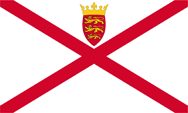 |
seit/since 1981, |
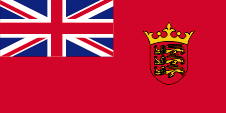 |
seit/from 2010, Handelsflagge – merchant flag, Seitenverhältnis – ratio = 1:2, Quelle/Source, nach/by: Wikipedia (DE) |
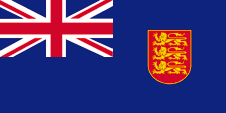 |
seit/from 2000, Flagge der Regierung (Staatsflagge) – flag of the government (state flag), geführt von der Fischereipatrouille – worn by the Fisheries Patrol, Seitenverhältnis – ratio = 1:2, Quelle/Source, nach/by: Flags of all Nations |
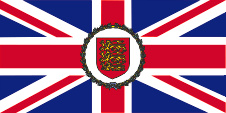 |
Flagge des Lieutenant Governor – flag of the Lieutenant Governor, Seitenverhältnis – ratio = 1:2, Quelle/Source, nach/by: Wikipedia (DE) |
historische Flaggen – historical Flags: |
|
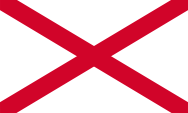 |
bis/to 1981, Nationalflagge – national flag, Seitenverhältnis – ratio = 3:5, Quelle/Source, nach/by: Wikipedia (DE)    |
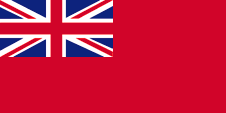 |
bis/to 2010, Handelsflagge – merchant flag, Seitenverhältnis – ratio = 1:2, Quelle/Source, nach/by: Flags of the World    |
| Jersey verwendet als Nationalflagge ein rotes Patrickskreuz auf weißem Grund, darüber das gekrönte Wappen Englands. Dieses wird auch in der Regierungsflagge (verwendet von der Fischereipatrouille), dem Blue Ensign verwendet, allerdings ohne Krone. Jersey orientiert sich damit am britschen Ensign-System. Dies und die Verwendung des "Union Jack" weisen auf die Verbindungen zu Großbritannien hin. | Jersey uses as national flag a red St. Patrick's Cross on white ground, above that the crowned coat of arms of England. That is also in use in the Gouvernment Ensign (worn by the Fisheries Patrol), the Blue Ensign, however without the crown. Jersey is in this way orientated in the British Ensign-System. This and the using of the "Union Jack" points to the connexions to United Kingdom. |
Großbritannien hatte in Jahr 1864 ein Flaggensystem eingeführt, in dem:
Seit 1865 durften Schiffe von Regional- oder Kolonialregierungen, auch von Ämtern und Behörden einen Blue Ensign mit einem Badge (Abzeichen) im fliegenden Ende verwenden. Handelsschiffe und seefahrende Privatpersonen aus Kolonien dürfen nur dann einen Red Ensign mit Badge führen, wenn von der britischen Admiralität eine entsprechende Erlaubnis für die Kolonie erteilt wurde. Diese scheint für Jersey seit 2010 vorzuliegen. |
United Kingdom introduced a flag system in 1864 in which:
Since 1865, ships of regional or colonial governments, as well of offices and authorities, were allowed to use a Blue Ensign with a badge in the flying end. Merchant ships and seafaring persons from colonies were only permitted to use the Red Ensign with a badge, then also named Civil Ensign, if permission has been given to the respective colony by the British admiralty. This seems to be for Jersey since 2010. |
| Quelle/Source: Wikipedia (EN), World Statesmen, Die Welt der Flaggen, Volker Preuß | |
| Wappen – Coat of arms: | |
 |
Wappen von Jersey – coat of arms of Jersey, Quelle/Source, nach/by: Wikipedia (DE) |
| Das Wappen von Jersey zeigt das Wappenbild von England. | The coat of arms of Jersey shows the heraldry of England. |
| Quelle/Source: Volker Preuß | |
| Landkarten – Maps: |
Lage – Position: |
Landkarte des Landes – Map of the Country: |
Landkarte der Kanalinseln – Map of the Channel Islands: |
| im Norden Alderney, im Süden Jersey, im Westen Guernsey, östlich davon Herm und Sark – in the north Alderney, in the south Jersey, in the west Guernsey, eastern of it Herm and Sark |
|
|
| Zahlen und Fakten – Numbers and Facts: | |
|
|
|
|
|
|
|
|
|
|
|
|
|
|
|
|
|
|
|
|
ca. 600 v.Chr. · keltische Besiedlung 56 v.Chr. · zum Römischen Reich 511 · zum Frankenreich 843 · zum Westfränkischen Reich 880 · zum Königreich Frankreich 933 · zum Herzogtum Normandie 1066 · Wilhelm I. (der Herzog der Normandie) wird zum König von England gekrönt, damit kommen die Kanalinseln nominell an die englische Krone 1106 · König Heinrich I. von England (Sohn von Wilhelm I.) besetzt die Kanalinseln, löst sie somit vom Herzogtum Normandie ab, und bindet sie an England 1373 · vergeblicher französischer Eroberungsversuch 1781 · französische Besetzung 1940–1945 · vom Deutschen Reich besetzt |
|
ca. 600 B.C. · Celtic settlement 56 B.C. · to the Roman Empire 511 · to the Frankish Empire 843 · to the West Frankish Empire 880 · to the Kingdom of France 933 · to the Duchy of Normandy 1066 · William I. (Duke of the Normandy) gets crowned to the King of England, therewith come the Channel Islands nominally to the English crown 1106 · King Henry I. of England (son of William I.) occupies the Channel Islands, separates them therewith from the Duchy of Normandy, and binds them on England 1373 · fruitless French try for capture 1781 · French occupation 1940–1945 · occupied by the German Empire |
| Translator of the English text: Joachim Nuthack |
| Quelle/Source: Atlas zur Geschichte, Wikipedia (DE), Discovery '97 |